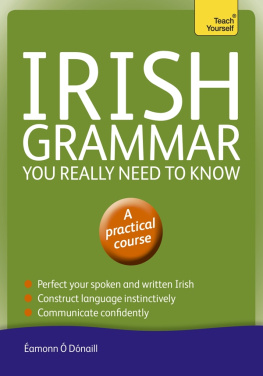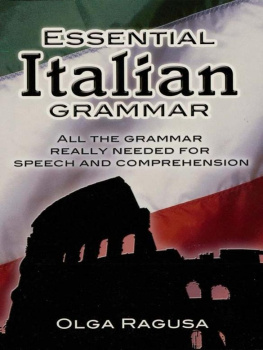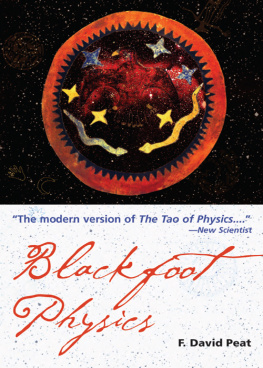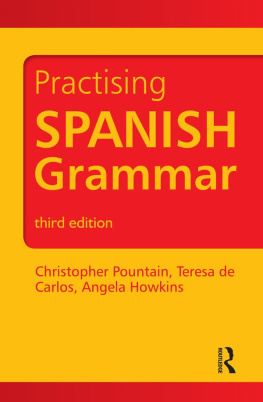Frantz - Blackfoot Grammar
Here you can read online Frantz - Blackfoot Grammar full text of the book (entire story) in english for free. Download pdf and epub, get meaning, cover and reviews about this ebook. City: Toronto, year: 2017, publisher: University of Toronto Press, genre: Children. Description of the work, (preface) as well as reviews are available. Best literature library LitArk.com created for fans of good reading and offers a wide selection of genres:
Romance novel
Science fiction
Adventure
Detective
Science
History
Home and family
Prose
Art
Politics
Computer
Non-fiction
Religion
Business
Children
Humor
Choose a favorite category and find really read worthwhile books. Enjoy immersion in the world of imagination, feel the emotions of the characters or learn something new for yourself, make an fascinating discovery.

Blackfoot Grammar: summary, description and annotation
We offer to read an annotation, description, summary or preface (depends on what the author of the book "Blackfoot Grammar" wrote himself). If you haven't found the necessary information about the book — write in the comments, we will try to find it.
Blackfoot Grammar, the companion volume to The Blackfoot Dictionary of Stems, Roots and Affixes Third Edition, provides description and analyses of the major features of Blackfoot grammar and language structures.
Frantz: author's other books
Who wrote Blackfoot Grammar? Find out the surname, the name of the author of the book and a list of all author's works by series.
Blackfoot Grammar — read online for free the complete book (whole text) full work
Below is the text of the book, divided by pages. System saving the place of the last page read, allows you to conveniently read the book "Blackfoot Grammar" online for free, without having to search again every time where you left off. Put a bookmark, and you can go to the page where you finished reading at any time.
Font size:
Interval:
Bookmark:
THIRD EDITION
Although thousands of people in Alberta and Montana speak Blackfoot, an Algonquian language, their numbers are diminishing and the survival of Blackfoot is in danger.
Blackfoot Grammar, the companion volume to Blackfoot Dictionary of Stems, Roots, and Affixes, third edition, provides description and analyses of the major features of Blackfoot grammar and language structures. The changes throughout this third edition reflect approaches refined through years of teaching experience. A new appendix, featuring a lengthy Blackfoot text with interlinear English translation, has been added, as well as numerous corrections and additions to every chapter. This third edition of Blackfoot Grammar will be a welcome resource not only for those who wish to learn the language, but for all those with an interest in Native Studies and North American linguistics.
DONALD G. FRANTZ is professor emeritus of Native Studies at the University of Lethbridge.
THIRD EDITION
Donald G. Frantz

University of Toronto Press 1991, 2009, 2017
Toronto Buffalo London
www.utppublishing.com
Printed in Canada
ISBN 978-1-4875-0086-3 (cloth)
ISBN 978-1-4875-2064-9 (paper)
First Edition 1991
Reprinted in paperback 1997
Second Edition 2009
Third Edition 2017

Printed on acid-free paper.

Library and Archives Canada Cataloguing in Publication
Frantz, Donald G., author
Blackfoot grammar / Donald G. Frantz. Third edition.
Includes bibliographical references and index.
Includes text in Blackfoot.
ISBN 978-1-4875-0086-3 (cloth). ISBN 978-1-4875-2064-9 (paper)
1. Siksika language Grammar. I. Title.
PM2342.F68 2017497.3525C2016-907847-7

University of Toronto Press acknowledges the financial assistance to its publishing program of the Canada Council for the Arts and the Ontario Arts Council, an agency of the Government of Ontario.

Research upon which this work is based began in late 1960, so a very large number of people have had a part in it. I was fortunate that when I began to study Blackfoot (under the auspices of the Summer Institute of Linguistics), Allan Taylor, more recently of the University of Colorado, but then a doctoral candidate at the University of California, Berkeley, had already spent a summer of research on the Blackfoot language in Montana. His generous sharing of his findings got me off to a comfortable start. Since that time he has contributed to my knowledge and understanding of Blackfoot structure in various ways, not the least of which is through his PhD dissertation (Taylor 1969).
Another person who has influenced my view of Blackfoot grammar over a period of many years and has brought various facts about the language to my attention is Gregory Thomson. I have benefited repeatedly from his insights, and his name will be seen in several footnotes.
Shortly before publication of the first edition of the grammar, Eung-Do Cook of the University of Calgary made helpful suggestions and comments on the manuscript. I also benefited from suggestions of four anonymous reviewers.
A large number of Blackfoot speakers have provided data and insights over the years. Those who gave extensive help are Irene Butterfly and Agnes Rider of the Blackfeet Tribe in Montana, and Rosie Ayoungman, Matthew Manyguns, Mike Peacemaker, and Frances and Bona Blackkettle of the Siksika Reserve in Alberta. During the first fifteen years of my tenure at the University of Lethbridge, First Nations students and faculty provided data and corrected examples in earlier drafts of this work. Again, there are far too many to mention all of them here, but Professor Leroy Little Bear, Martin Heavy Head, Mary Ruth McDougall, Lena Russell, Norma Russell, Sandra Bruised Head, and Mary Atoa come to mind. Marys corrections of several examples in the book are especially appreciated. Finally, many non-Native students at the University of Lethbridge have helped improve this book by asking probing questions about its content. Among those who have contributed the most in this way are Marguerite Koole and Michelle Deering.
Peter Pankonin, a former student of my Blackfoot course at the University of Lethbridge, has made a unique combination of contributions to the third edition of this book. He took responsibility upon himself to prepare the manuscript for publication, putting untold hours into getting the layout perfect, including Index, page numbers, and especially alignment of examples. In so doing, he noticed numerous inconsistencies that we were able to correct, many of which depended on his understanding of Blackfoot grammar. Thanks to him, the entire Grammar will be more useful to its users.
In addition to a number of minor improvements to the second edition, including correction of typological errors (in particular, in , an analyzed Blackfoot text.
In this edition I have added two new chapters and two additional appendices. I also have done extensive revision of , as well as made corrections and additions to most other chapters. Exercises have been added at the end of several later chapters.
Since publication of the first edition, there have been two major developments that bear on this grammar and its use. The first is that as the Blackfoot language is used less and less, it is changing rapidly, with sub-dialects and idiolects arising as a result of the lack of feedback from fluent speakers. Changes I have observed include loss or shortening of many inflectional suffixes, and, probably as a result of the loss of suffixes, non-use or partial use of the category minor third person (see
In this regard, I would like to encourage researchers to work with more than one Blackfoot speaker. Getting two or more speakers together is an ideal way to mitigate the chance that what the researchers are investigating and describing is the language of a single speaker rather than that of a community.
This work is intended to serve a variety of audiences. So that it may be useful to laypersons interested in learning, or at least learning about, the Blackfoot language, the first few chapters are written in a different style from the later, more technical sounding chapters. But the later chapters build upon facts and concepts introduced in the early chapters, which, it is hoped, provide a relatively painless introduction to many of the necessary technical terms utilized in those later chapters.
Because linguistic concepts are utilized and all description is explicit, this work can also serve as a reference text for courses on the structure of Blackfoot, as well as a reference grammar for linguists and others interested in the structure of the language. Users should be warned, however, that a casual reading of early chapters will not prepare the reader for later chapters. Basic concepts must be understood as they are introduced, for later presentations depend upon them. The experience of students who have used drafts of this work has been that one needs to continually review previously introduced concepts, terms, and facts, because knowledge of these is assumed after they have been introduced. Frequent use of the Index is recommended in this regard.
Font size:
Interval:
Bookmark:
Similar books «Blackfoot Grammar»
Look at similar books to Blackfoot Grammar. We have selected literature similar in name and meaning in the hope of providing readers with more options to find new, interesting, not yet read works.
Discussion, reviews of the book Blackfoot Grammar and just readers' own opinions. Leave your comments, write what you think about the work, its meaning or the main characters. Specify what exactly you liked and what you didn't like, and why you think so.




